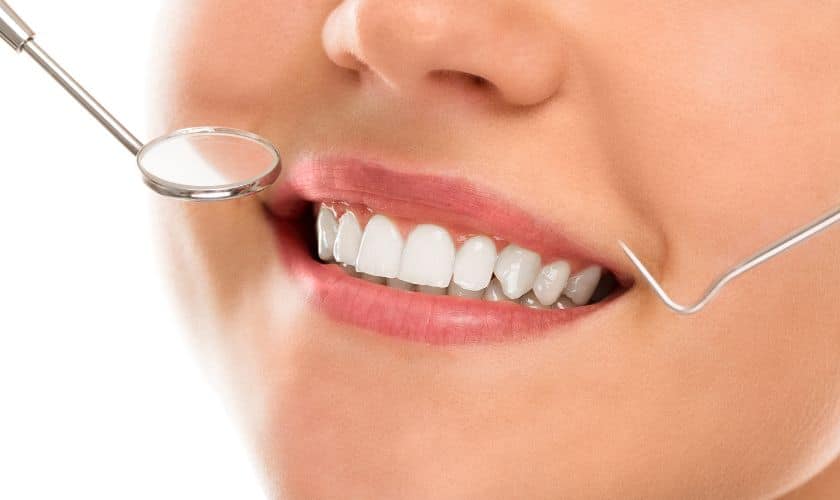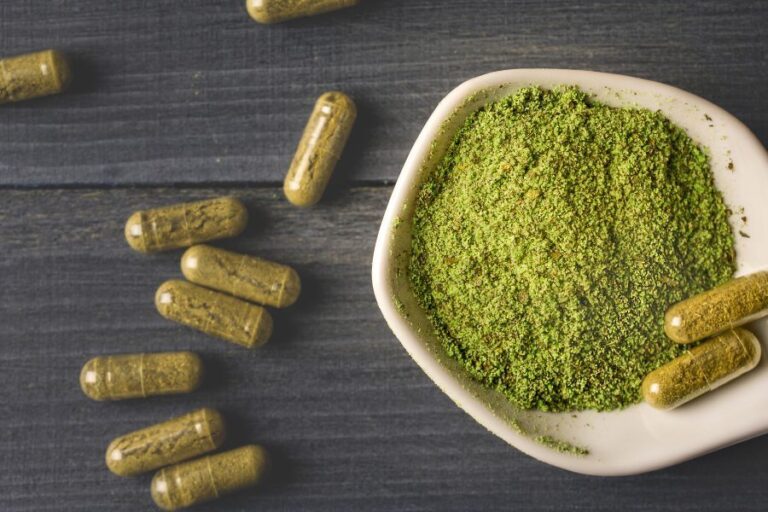A dazzling smile is often considered one of the most attractive features a person can possess. It has the power to light up a room, make a lasting impression, and boost one’s confidence. However, achieving that perfect, pearly white smile can be a challenge for many. With so many products and procedures on the market claiming to whiten teeth, it can be overwhelming to know where to start. But fear not, because in this comprehensive guide, we will unveil the secrets to illuminating your smile and achieving a brighter, more confident you.
The Art of a Dazzling Smile: Achieving Pearly White Perfection
Having a bright, white smile is not just about aesthetics; it also reflects good oral health. Our teeth are constantly exposed to staining agents such as coffee, tea, and tobacco, which can cause discoloration over time. Poor dental hygiene and certain medications can also contribute to yellowing or dullness of teeth. Fortunately, there are various ways to achieve a brighter smile, from simple at-home remedies to professional treatments. Let’s explore some of these options in detail.
Understanding the Causes of Tooth Discoloration
Before diving into the different methods of teeth whitening, it’s important to understand the root causes of tooth discoloration. This will help determine the most effective approach for each individual.
- Extrinsic Stains: These are stains that occur on the outer layer of the tooth, known as the enamel. They are caused by external factors such as food, drinks, and smoking. These stains can usually be removed with proper brushing and regular dental cleanings.
- Intrinsic Stains: These are stains that occur within the tooth, in the dentin layer. They are usually caused by trauma, aging, or excessive exposure to fluoride during tooth development. Intrinsic stains are more difficult to remove and may require professional treatment.
- Age-related Discoloration: As we age, our teeth naturally become more yellow or gray due to the thinning of the enamel and exposure of the dentin layer. This is a normal part of aging and can be addressed with proper oral hygiene and whitening treatments.
Now that we understand the different types of tooth discoloration, let’s explore some effective ways to achieve a brighter smile.
At-Home Remedies for a Whiter Smile
There are many at-home remedies that claim to whiten teeth, but not all of them are safe or effective. It’s important to do thorough research and consult with a dentist before trying any DIY methods. Here are a few natural remedies that have been proven to brighten teeth:
- Oil Pulling: This ancient Ayurvedic practice involves swishing oil (usually coconut or sesame) in the mouth for 15-20 minutes to remove toxins and bacteria. Some people claim that oil pulling can also help whiten teeth, but there is no scientific evidence to support this claim.
- Baking Soda: Baking soda has natural whitening properties and can be used as a gentle abrasive to remove surface stains. Mix a small amount of baking soda with water to form a paste, then brush your teeth with it for 2 minutes. Be careful not to use too much baking soda as it can damage the enamel.
- Activated Charcoal: Activated charcoal is a popular ingredient in many teeth whitening products. It works by absorbing toxins and stains from the teeth. However, there is limited research on its effectiveness and it may not be suitable for everyone.
- Fruits and Vegetables: Crunchy fruits and vegetables such as apples, carrots, and celery can act as natural stain removers. They also increase saliva production, which helps wash away plaque and bacteria.
While these at-home remedies may provide some improvement in tooth color, they are not as effective as professional treatments. It’s important to maintain good oral hygiene and visit the dentist regularly for cleanings and check-ups.
Unlocking the Radiance: A Comprehensive Guide to Smile Illumination
For those looking for more significant results, there are various professional teeth whitening options available. These methods are usually more expensive than at-home remedies but can provide longer-lasting and more noticeable results. Let’s take a closer look at some of these options.
In-Office Teeth Whitening
In-office teeth whitening is a popular choice for those seeking immediate and dramatic results. This procedure is performed by a dental professional and involves applying a bleaching agent (usually hydrogen peroxide or carbamide peroxide) to the teeth and activating it with a special light. The entire process takes about an hour and can lighten teeth by several shades.
Pros:
- Fast and effective results
- Performed by a trained professional
- Can address both extrinsic and intrinsic stains
Cons:
- Expensive
- May cause temporary sensitivity
- Results may not last long if proper maintenance is not followed
Take-Home Whitening Kits
Take-home whitening kits are a more affordable option for those who want to whiten their teeth professionally but prefer to do it in the comfort of their own home. These kits include custom-made trays that fit over the teeth and a bleaching gel that is applied to the trays and worn for a specified amount of time each day. The treatment usually takes 1-2 weeks to achieve desired results.
Pros:
- More affordable than in-office treatments
- Customized trays for a comfortable fit
- Can be used at home at your convenience
Cons:
- Takes longer to see results compared to in-office treatments
- Requires consistent use for best results
- May cause temporary sensitivity
Over-the-Counter Whitening Products
There are many over-the-counter (OTC) teeth whitening products available, such as whitening toothpaste, strips, and gels. These products contain a lower concentration of bleaching agents compared to professional treatments, making them less effective. However, they can still provide some improvement in tooth color.
Pros:
- Affordable
- Easily accessible
- Can be used at home
Cons:
- Results may not be as noticeable as professional treatments
- May take longer to see results
- May cause sensitivity or irritation if not used properly
It’s important to note that OTC whitening products are not regulated by the FDA, so it’s crucial to read reviews and choose reputable brands to ensure safety and effectiveness.
Transform Your Smile: A Journey to a Brighter, More Confident You
Achieving a brighter smile is not just about the physical appearance; it also has a significant impact on one’s self-confidence. Many people feel self-conscious about their teeth and may avoid smiling or social situations because of it. Having a bright, white smile can boost confidence and improve overall well-being. Here are some simple yet effective tips for maintaining a healthy, radiant smile:
- Practice Good Oral Hygiene: Brush your teeth twice a day with fluoride toothpaste, floss daily, and use mouthwash to keep your teeth and gums healthy.
- Limit Staining Foods and Drinks: Foods and drinks such as coffee, tea, red wine, and dark-colored fruits can stain teeth. Limiting consumption or rinsing your mouth with water after consuming them can help prevent staining.
- Quit Smoking: Tobacco is one of the leading causes of tooth discoloration. Quitting smoking not only improves oral health but also has numerous other health benefits.
- Use a Straw: When drinking beverages that can stain teeth, using a straw can minimize contact with the teeth and reduce the risk of staining.
- Maintain Regular Dental Cleanings: Professional cleanings every 6 months can help remove surface stains and keep your teeth and gums healthy.
In addition to these tips, it’s important to maintain a healthy lifestyle overall. Eating a balanced diet, staying hydrated, and reducing stress can also contribute to a brighter, healthier smile.
The Ultimate Smile Makeover: Achieving a Hollywood-Worthy Smile
For those looking for a complete smile transformation, there are various cosmetic dentistry procedures available. These procedures not only whiten teeth but also address other aesthetic concerns such as crooked or misshapen teeth. Let’s explore some of these options in detail.
Porcelain Veneers
Porcelain veneers are thin, custom-made shells that are bonded to the front surface of the teeth. They can improve the appearance of stained, chipped, or misaligned teeth, giving you a flawless, white smile. The process involves removing a small amount of enamel from the teeth to make room for the veneers, taking impressions, and then bonding the veneers to the teeth. Veneers are a more permanent solution compared to other whitening methods and can last up to 10 years with proper care.
Pros:
- Can address multiple cosmetic concerns at once
- Long-lasting results
- Natural-looking and customizable
Cons:
- Expensive
- Irreversible procedure
- May cause sensitivity or discomfort during the process
Dental Bonding
Dental bonding is a less invasive and more affordable alternative to porcelain veneers. It involves applying a tooth-colored resin material to the teeth and shaping it to improve their appearance. This procedure is usually used to fix minor imperfections such as chips, gaps, or discoloration. The results are not as long-lasting as veneers and may require touch-ups over time.
Pros:
- Less expensive than veneers
- Quick and painless procedure
- Can address minor cosmetic concerns
Cons:
- Not as long-lasting as veneers
- May not be suitable for more severe cosmetic concerns
- Results may not be as natural-looking as veneers
Teeth Whitening with Braces or Invisalign
For those who need orthodontic treatment to straighten their teeth, there are options available that also include teeth whitening. Invisalign is a popular alternative to traditional braces, and some providers offer a whitening kit along with the aligners. This allows patients to achieve a straighter, whiter smile simultaneously.
Pros:
- Two treatments in one
- Can address both alignment and discoloration concerns
- More discreet than traditional braces
Cons:
- May not be suitable for everyone
- Requires commitment to wearing aligners for optimal results
- May cause temporary sensitivity or discomfort during the process
Illuminate Your Smile: Unveiling the Power of Professional Teeth Whitening
Professional teeth whitening has come a long way in recent years, and it’s now easier than ever to achieve a brighter, more confident smile. Whether you choose an in-office treatment or a take-home kit, professional whitening can provide significant and long-lasting results. Here are some of the benefits of professional teeth whitening:
- Customized Treatment: With professional whitening, your dentist will create a customized treatment plan based on your specific needs and goals.
- Safe and Effective: Professional treatments are performed by trained professionals using high-quality products, ensuring safety and effectiveness.
- Long-Lasting Results: With proper maintenance and follow-up treatments, professional whitening can provide long-lasting results.
- Address Multiple Concerns: Professional whitening can address both extrinsic and intrinsic stains, as well as other cosmetic concerns such as uneven tooth color or shape.
It’s important to note that professional teeth whitening is not a one-time solution. To maintain a bright, white smile, it’s crucial to follow proper oral hygiene and visit the dentist regularly for cleanings and touch-ups.
Natural Ways to Illuminate Your Smile: Harnessing the Power of Nature
For those who prefer natural remedies, there are some options available that can help whiten teeth without the use of chemicals or harsh ingredients. Here are some natural ways to illuminate your smile:
- Oil Pulling with Coconut Oil: As mentioned earlier, oil pulling can help remove toxins and bacteria from the mouth. Using coconut oil has the added benefit of lauric acid, which has been shown to have antimicrobial properties.
- Strawberries: Strawberries contain malic acid, which is a natural whitening agent. Mashing up strawberries and brushing your teeth with the mixture can help remove surface stains.
- Apple Cider Vinegar: Apple cider vinegar has been touted as a natural teeth whitener due to its acidic properties. However, it’s important to use caution when using this method as the acid can erode tooth enamel if used too frequently or in high concentrations.
- Turmeric: Turmeric has anti-inflammatory and antibacterial properties and has been used in Ayurvedic medicine for centuries. Some people claim that brushing with turmeric can help whiten teeth, but there is limited research to support this claim.
While these natural methods may provide some improvement in tooth color, they may not be as effective as professional treatments. It’s important to consult with a dentist before trying any natural remedies to ensure safety and effectiveness.
Conclusion
Having a bright, white smile is not just about aesthetics; it also reflects good oral health and can boost confidence. With so many options available, it can be overwhelming to know where to start when it comes to achieving a brighter smile. From at-home remedies to professional treatments, there is something for everyone. It’s important to understand the causes of tooth discoloration and consult with a dentist to determine the best approach for each individual. With proper maintenance and regular dental visits, you can unlock the radiance of your smile and achieve a brighter, more confident you.




















+ There are no comments
Add yours